For mountaineers, Pakistan is often synonymous with the mighty K2, Nanga Parbat, or the sprawling glaciers of the Karakoram. But beyond the realm of the world’s highest and most challenging peaks, the country is also home to an impressive collection of 6000-meter mountains that are far more approachable for beginners. These peaks offer the perfect training ground for aspiring climbers who want to transition from trekking into high-altitude mountaineering.
Climbing a 6000m peak is no small feat—it requires preparation, endurance, and a spirit of adventure—but it’s also a rewarding experience that opens the doors to bigger challenges in the future. If you’re considering your first Himalayan or Karakoram ascent, this guide will help you understand what to expect and how to prepare for it.
Why Start with a 6000m Peak?
1. Manageable Altitude
Peaks in the 6000m range sit in the sweet spot of mountaineering. They’re high enough to expose climbers to the challenges of altitude—thin air, colder temperatures, and longer days on the mountain—without the extreme dangers of the 7000m and 8000m giants.
2. Technical but Accessible
Many of Pakistan’s 6000m peaks offer non-technical routes with moderate ice, snow, and rock sections. They provide an excellent platform to practice rope work, crampon use, and glacier travel without overwhelming beginners.
3. Training for Bigger Peaks
Climbing at 6000m is an essential stepping stone for anyone dreaming of summiting higher peaks like Spantik, Broad Peak, or even K2 in the long run.
4. Rich Experience in Less Time
Unlike the 40–60 day expeditions required for 8000m mountains, most 6000m climbs can be done in 10–20 days, making them more practical for beginners with limited time or resources.
Popular Beginner-Friendly 6000m Peaks in Pakistan
Khosar Gang (6,401m)
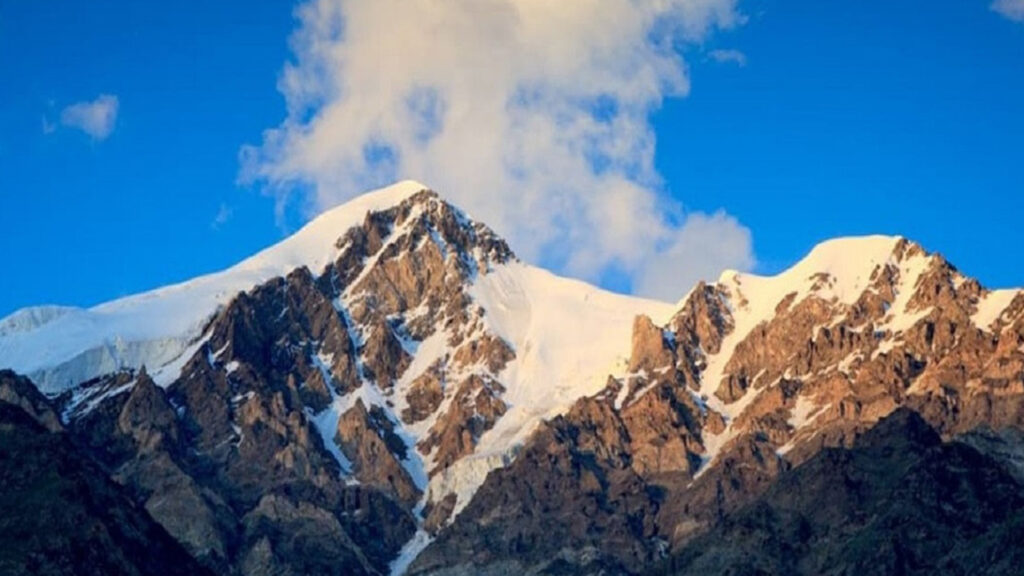
- Known locally as “Pumpkin Glacier Peak,” Khosar Gang is one of the most accessible 6000m peaks in the Karakoram.
- Highlights: Short approach trek, proximity to Skardu, and panoramic views of Spantik and the Shigar Valley.
- Why it’s great for beginners: Moderate snow slopes and a straightforward route to the summit.
Minglik Sar (6,050m)
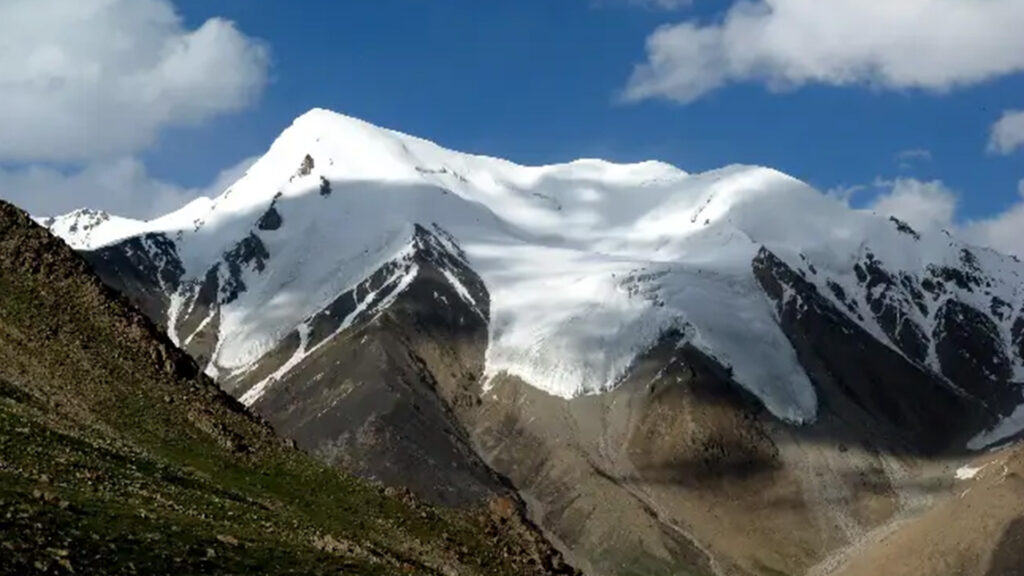
- Located in Hunza’s remote Shimshal Valley, Minglik Sar offers an incredible alpine experience.
- Highlights: Stunning views of the Pamirs and Karakoram, plus cultural immersion in Shimshal village.
- Why it’s great for beginners: A steady, non-technical ascent suitable for trekkers transitioning to climbing.
Bargancho Peak (6,050m)
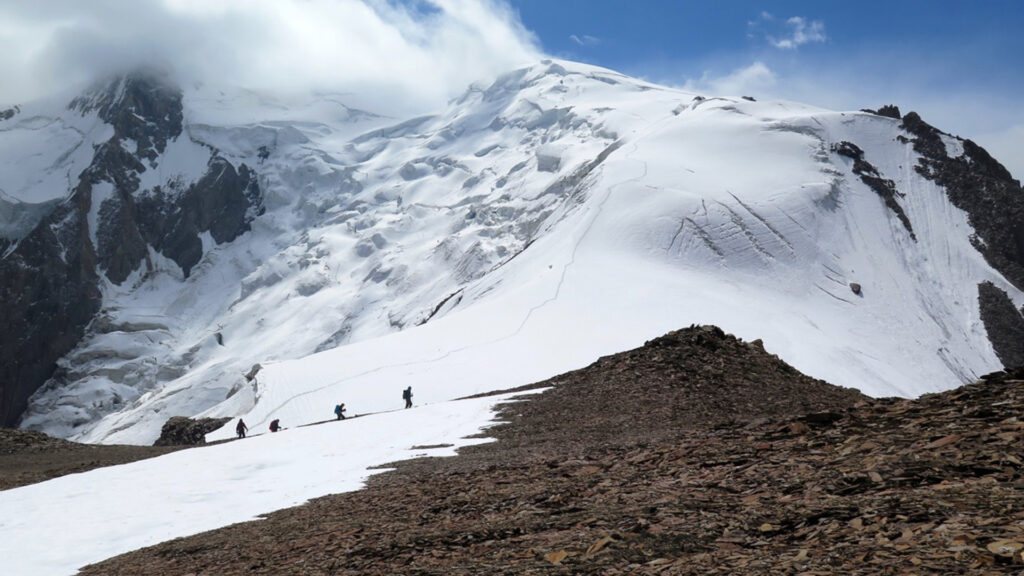
- A hidden gem, Bargancho is surrounded by pristine wilderness, alpine lakes, and untouched glaciers.
- Highlights: Unique combination of scenic beauty and cultural immersion.
- Why it’s great for beginners: Relatively short expedition length and easier climbing terrain.
Mitre Peak (6,030m)
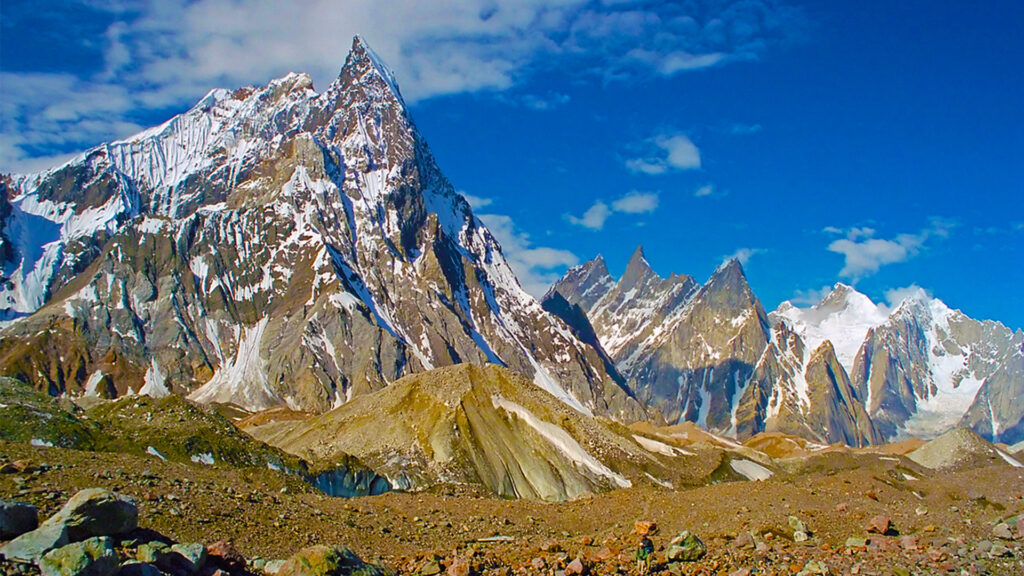
- Sometimes overshadowed by Minglik Sar, Mitre Peak is another excellent choice for new climbers.
- Highlights: Situated near Baltoro Glacier with open, rolling landscapes.
- Why it’s great for beginners: Straightforward ascent with minimal technical difficulty.
Laila Peak (6,447m)
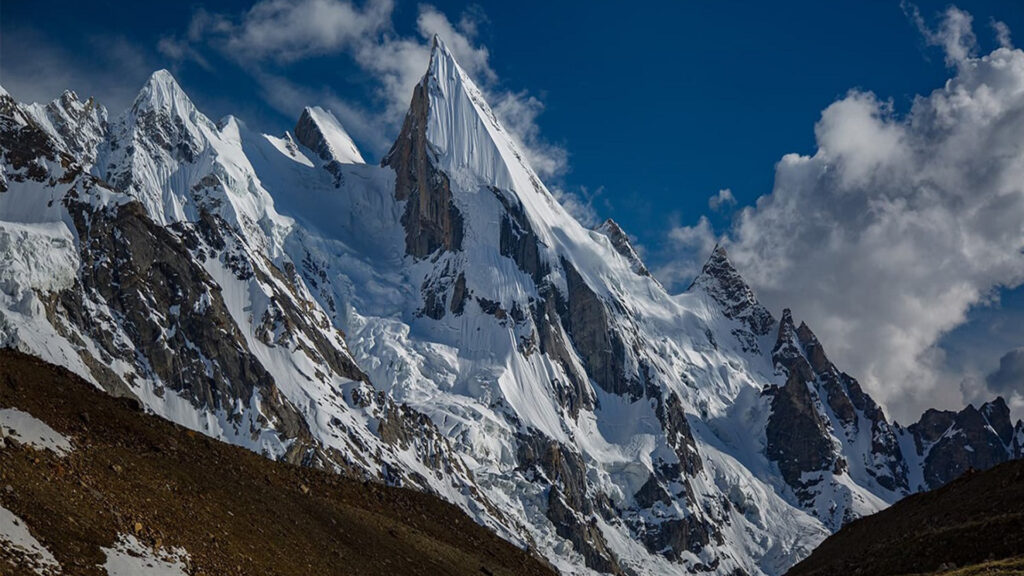
- A more advanced option within the beginner-friendly category.
- Highlights: Panoramic views of K2 and surrounding giants.
- Why it’s great for beginners: Slightly more challenging, but perfect for those who want to push themselves after a first 6000m climb.
Preparing for Your First 6000m Climb
1. Build Physical Fitness
Climbing a 6000m peak demands strong endurance, stamina, and strength. Training should begin at least 4–6 months in advance and include:
- Cardio workouts: Running, hiking, cycling, or swimming to build lung capacity.
- Strength training: Focus on legs, core, and upper body for carrying loads.
- Hiking practice: Carry a weighted backpack on long hikes to simulate trekking conditions.
2. Acclimatization is Key
Altitude sickness is the biggest risk on 6000m peaks. Proper acclimatization—spending time at progressively higher altitudes before pushing further—is essential. Most expeditions include rest days and staged ascents to minimize risks.
3. Learn Basic Mountaineering Skills
Even if the route is non-technical, you’ll need to know how to:
- Walk with crampons.
- Use an ice axe for self-arrest.
- Tie knots and rope up for glacier travel.
- Navigate snowfields and crevassed areas.
Joining a mountaineering course or practicing with local guides beforehand can make all the difference.
4. Mental Preparation
Climbing at high altitude is as much a mental challenge as a physical one. Be ready for long, tiring days, cold conditions, and moments of self-doubt. Patience and persistence often make the difference between success and retreat.
What to Pack for a 6000m Expedition
Packing smartly is crucial for safety and comfort. Here’s a breakdown:
Clothing
- Base layers (thermal tops and bottoms)
- Insulating mid-layers (fleece or down jacket)
- Waterproof outer shell (jacket and pants)
- Gloves and mittens (light + insulated)
- Warm hat and balaclava
- Sturdy trekking boots + insulated mountaineering boots
Equipment
- Climbing harness and helmet
- Crampons and ice axe
- Trekking poles
- Headlamp with spare batteries
- Sleeping bag (rated to –20°C or colder)
- Backpack (50–70 liters)
Personal Essentials
- Sunglasses and sunscreen
- Water purification tablets
- First-aid kit and altitude medication (if prescribed)
- Energy snacks and hydration system
Most operators in Gilgit-Baltistan provide shared equipment like ropes, tents, and cooking gear, but confirm before you pack.
What to Expect on the Mountain
The Approach Trek
Reaching base camp often involves 1–3 days of trekking through villages, fields, and alpine meadows. This part is relatively easy and helps with acclimatization.
Base Camp Life
At base camp, you’ll spend time resting, acclimatizing, and preparing for summit day. Expect simple meals, stunning scenery, and plenty of bonding time with fellow climbers.
Summit Push
On summit day, climbers usually start early (sometimes around midnight) to take advantage of stable snow conditions. Expect 6–10 hours of climbing to the summit and several hours descending back to camp.
The Reward
Standing on top of your first 6000m peak is unforgettable. The sense of achievement, combined with panoramic views of towering mountains, is worth every step.
Safety Consideration
- Altitude sickness: Know the symptoms—headache, nausea, dizziness—and descend if they worsen.
- Weather changes: Conditions in the Karakoram can shift rapidly. Always heed your guide’s advice.
- Hydration and nutrition: Drink plenty of water and eat regularly to maintain energy.
- Travel insurance: Ensure your insurance covers high-altitude trekking and climbing.
Best Season for 6000m Climbs in Pakistan
- June to September is the prime climbing season.
- July and August are warmest, offering stable conditions but also more crowds.
- September is cooler, with fewer climbers and clear skies.
Why Choose Local Guides and Operators
Hiring local guides not only enhances safety but also supports the communities of Gilgit-Baltistan. Experienced operators provide logistics, porters, cooks, and expert knowledge of the terrain. Their insights can turn a challenging climb into a memorable adventure.
Conclusion
Climbing your first 6000m peak in Pakistan is more than just an adventure—it’s a transformative experience. These peaks offer a perfect balance of challenge and accessibility, allowing beginners to taste the thrill of mountaineering in one of the most beautiful regions on earth.
Whether you choose the stunning Khosar Gang, the cultural richness of Shimshal’s Minglik Sar, or the pristine wilderness of Bargancho, your first climb will be the beginning of a lifelong love affair with the mountains.
So, lace up your boots, train hard, and take the leap—you may just find yourself planning your next big ascent before you even leave the mountains behind.


